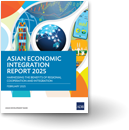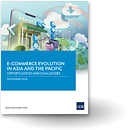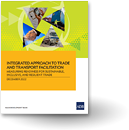Reasons to be optimistic about the ASEAN Economic Community (AEC) process
When the ASEAN Economic Community (AEC) Blueprint was adopted at the 13th ASEAN Summit in November 2007, many experts couldn’t believe their eyes: creating a unified market in which goods, services, foreign direct investment (FDI), and skilled labor would flow freely by 2015 certainly would be an ambitious task, particularly in a highly-diverse, developing region like ASEAN.
Skeptics suggested that this was once again an example of ASEAN’s biting off more than it could chew, and the end result would be far from a “single market and production base, a highly competitive economic region, a region of equitable economic development, and a region fully integrated into the global economy” envisioned in the Declaration on the AEC Blueprint. No doubt, they argued, the AEC would disappoint.
AEC is progressing even as the going gets tough
It is easy to be skeptical about ambitious policy targets for any regional economic grouping, particularly since measurement can be subjective and realization can be in the eyes of the beholder. After all, even the European Single Market Programme—not to be confused with European monetary union, which obviously is more complicated—is still not “complete” even after a quarter-century, despite the fact that it has been a great success in achieving its “Four Freedoms” (free flow of goods, services, investment and labor).
Indeed, European economic integration is seen as a process, rather than a measureable goal which at some point will be accomplished. Arguably, the AEC should be evaluated in the same light, i.e., as a process of integration. Most analyses (e.g., ASEAN Scorecard) would suggest that there has been significant progress toward the AEC but that the going is predictably getting tougher and much remains to be done.
The considerable benefits of the AEC can outweigh political costs
In a recent publication with my colleagues Peter Petri and Fan Zhai, we estimate the potential economic effects of completing the ASEAN Free Trade Area (AFTA), partial implementation of the AEC (AFTA+), the AEC itself; and then scenarios of internal integration combined with external initiatives, including the deepening of bilateral FTAs with the Regional Economic Comprehensive Partnership (RCEP) economics (AEC+) and bilateral FTAs also with Europe and the United States (AEC++). Details of the model are spelled out in that publication or can be found at our website.
The full implementation of the AEC would raise real ASEAN incomes by $69.4 billion, or 5.3 percent of regional GDP over the 2004 baseline—a large number compared to those usually estimated in FTA studies (Table 1). Deepening of economic integration obviously counts: about half of the AEC benefits derive from trade facilitation (the difference between AFTA and AFTA+), and half from investment facilitation (the presumed difference between AFTA+ and the AEC). All ASEAN members would gain from the AEC, with the largest countries experiencing the greatest absolute gains.
Table 1: Effects of integration scenarios on income

Source: Adopted from Petri, et. al. (2012).
The benefits of the AEC are, therefore, considerable, and picking the “high-hanging fruit” will generate the greatest gains. Doing so will obviously be politically difficult, as many of the higher forms of cooperation covered in the AEC Blueprint are “behind the border” measures, and these will include domestic policies as well as international commercial policies. Still, the prospective returns from cooperation and harmonization are large and should be worth the political investments.
As a final point, I might underscore that deepening external relations with ASEAN partners at the same time that the AEC integration process proceeds apace makes great sense. ASEAN does three-fourths of its trade with, and receives four-fifths of its FDI from, non-member countries; scenarios that also include RCEP partners, the United States, and the EU generate still greater gains. RCEP will increase the gains by two-thirds over the AEC alone (AEC+) and extensions to the United States and Europe would better than double them (AEC++). Thus, keeping the AEC process open is extremely important to the success of the project. ASEAN leaders understand this; “integrating with the global economy” is one of the AEC’s four pillars.
In short, while there are many cynics among trade policy experts (and often for good reason), the internal integration process through the AEC and “ASEAN Centrality” in external relations makes a great deal of sense for the region. As 2015 approaches rapidly, hopefully policymakers will take this to heart.
*Eni Professor of International Economics, The Johns Hopkins University, SAIS




